Multimedia applications of the system Theremino
Build a real Theremin with less than 50 Euro
…you take an antenna from an old radio connects a few threads and the Theremin is done. And you should not even be a programmer or electronic designers. Just use the hardware and software modules, to get the strangest musical instruments and never seen before.
First of all,, try as he plays the software. is Open Source, It costs nothing and works even without hardware. Download it and try it now sounds: www.theremino.com/downloads/multimedia
Watch these videos:
PolyTest ThereminoTheremin
ThereminoTheremin SlotsToMidi
We're not talking the usual buzzing toys that you see on the net, as the following:
www.youtube.com/watch?v = BF_U65Ha0DU
www.youtube.com/watch?v = 57S3dylfw3I #
www.youtube.com/watch?v = _ 4cIv6qLaM8
www.youtube.com/watch?v = sWjoVNzlU5E
www.youtube.com/watch?v = 0F0UEp1DyNs
www.youtube.com/watch?v = I2dlDVVE03M
www.youtube.com/watch?v = l1TBL3N-FZo #
www.youtube.com/watch?v = 8wnQbG10RcM
www.youtube.com/watch?v = Yf-7tViVxQE
These links are not chosen from among the worst, the theremin found on the net are even worse. To make a theremin polyphonic and programmable sounds really good, not just an Arduino, It takes the full power of a PC hardware and software. If anyone can, with an Arduino, to make a Theremin with the performance of our, give him a CapSensorHQ and a Master.
Attention: Arduino is great for standalone applications and We recommend often to use Arduino in place of our system. But it is also necessary to clarify the confusion that many are doing between the two systems. Apparently Theremino and Arduino are similar but the underlying philosophy is very different. Trying to simplify: Arduino does everything in firmware and fine for stand-alone applications, Theremino instead bases its application on high level software must be run on a PC.
– – – – – – –
Tips to avoid interference between the antennas
The length of antennae and other random factors may contribute together to work the volume antenna on the same frequency as that of the note. This coincidence happens rarely but can be very annoying. If the two antennas are working on the same frequency can interfere with each other and cause interference on note when moving your left hand.
First of all you should check the frequencies in HAL program. Double click with the left button on the first CapSensor (first arrow left). Then click right on the line of the second single CapSensor (first arrow left). Finally, check the two frequencies, indicated by the Orange arrows on the right, to be different (We say at least 100 kHz)
To resolve the problem of interference, Add a capacitor to 10 PF in series with the wire of the antenna of the volume.
This capacitor makes sure that the volume is higher antenna frequency (always better to have the volume antenna with higher frequency than that of note) It also has the beneficial effect of prevent the volume oscillator causes noise when touching the metal of its antenna.
– – – – – – –
Tips to avoid interference from external sources
The oscillators of CapSensor have been working for 2.3 to 2.6 Megahertz, It is an area very interference-free radio, over at medium wave and shortwave first. Mobile phones, cordless and WiFi interference sources not. The CapSensor are also immune to powerful radio and CB and amateur radio frequencies.
The output power of CapSensor is much less than that of the Theremin Moog (and therefore a minor electrical pollution to the surrounding environment) but the downside is that the oscillators of CapSensor are much more sensitive to disturbance than a Moog Theremin. There is therefore the possibility that a strong radio station, which coincidentally is exactly on the same working frequency of one of the two antennas, cause eating disorders. Even a Theremin Moog would be disturbed but probably much less.
In some, very rare, cases there have been repeated small disturbances that sometimes lasted for hours and who suddenly disappeared. We were never able to verify this but we think have been some transmitters, do not insert transmission tables, right on some of the frequencies that we do.
If you have these problems, You may add a small capacitor in parallel to the pitch antenna. (between signal and ground) Only the antenna of the intonation is important, because noise is minimal, however, and, even if they exist on the volume, are not audible.
Add capacitors from 2.2, 3.9 or 4.7 PF light causes lowering of the frequency and this way you should find an interference-free zone. Attention that must be pF, If you make a mistake and using capacitors from nanoFarad or MFD, the antenna doesn't work anymore or loses almost all its sensitivity.
Dont worry too much from these observations, don't really ever, However it can't hurt to get some pF capacitors and prepare them for a female connector for emergencies, such a concert next to a transmitter that emits army right on the frequency of the antenna of the notes.
Solder the tad bit that goes to the antenna from below the printed so as to release the connettormaschio and use only female connector-turned as shown on this page:
www.theremino.com/technical/connection-cables
– – – – – – –
Tips to avoid skipping and random noises
You can receive any movement disorders also minimal, metal parts that move, twisting of wood, not well fixed antenna, female connectors, non-turned, touching evil and just move your legs under the table, move the mouse, the table dancing or the public too close.
The application provides a kind of HAL oscilloscope for testing the stability of the oscillators, get into the habit of using it and double check all doing the tests with the only HAL.
Try to move and twist all mechanical parts before you trust that do not create problems. Also try to keep everything firm and ensure that the line is free from disturbances, as on the right side of this picture. You can tolerate at most one pixel of noise as the step that you see on the left before the horizontal part.
Before making important runs, prepare a proper workstation and double check the stability of all components.
– – – – – – –
The Theremin Moog
To see Theremins played by true professionals watch these videos:
www.youtube.com/watch?v = VHOGW5MDsz8
www.youtube.com/watch?v = 3EPtUPcs8s #
Those who want to learn to play a Theremin should definitely watch this video, from start to finish: www.youtube.com/watch?v = X-ywH1Vj8 _ U *
– – – – – – –
 www.thereminworld.com/schematics
www.thereminworld.com/schematics
On this site you will find patterns and prices of all commercial and Theremin Kit, but also practice directions and hints for learning how to play them. The real Center of the world for thereministi.
And here's an interesting section of the forum on sensors suitable for ThereminSynth: www.thereminworld.com/Forums/T/29245/greetings-gots-an-idea-maybe
– – – – – – – –
The Theremino Theremin
Synthesizers are Theremino system real musical instruments. Compound sounds in software allow richer sounds and endless variations of timbre.
Il Theremino Theremin non è un giocattolo hissing and humming, ma un vero strumento musicale. Uno strumento a livello dei Theremin della Moog, but better because it automatically maintains notes tuned and select under the agreements. The Theremino Theremin can be easily changed, expanded and integrated with other components of the system Theremino, as the capacitive buttons, to compose new musical instruments, never seen before. An imaginative and capable musician could invent concert musical instruments, similar to Laser Harp, but based on other principles. Theremino the system with its endless possibilities for Input-Output is the easiest way to invent new and spectacular musical instruments, to use on stage.
– – – – – – –
Videos of Theremino Theremin !
These videos illustrate only the technical performance of the instrument. The musician (I) sounds bad almost all the tools: Guitar, keyboards, bass and percussion. He also tried to play the violin and the hunted by the Group, for the record likes and dislikes “The Night Rovers” and the name was written on the case as “The Beatles” and “The Rolling Stones”
Theremino Synth – Flangy Arp
ThereminoSynth LegatoAndPizzicato
– 01 – Soundtest ThereminoSynth LegatoAndPizzicato
– 02 – Intro ThereminoSynth LegatoAndPizzicato
– 03 – Heart ThereminoSynth LegatoAndPizzicato
– 04 – End
LTSpice simulation of oscillators for Theremin
Download simulation to LTSpice:
Etherwave_and_CapSensor_LTSpice_Simulations

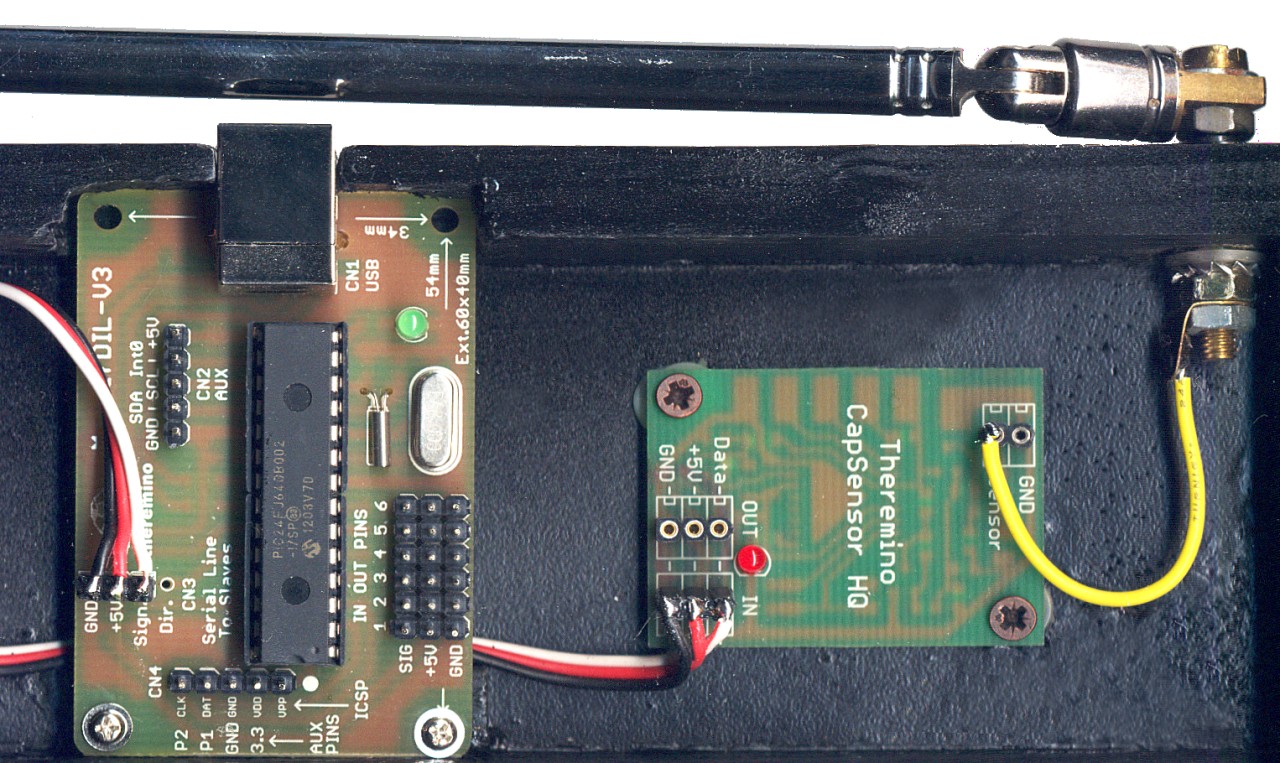
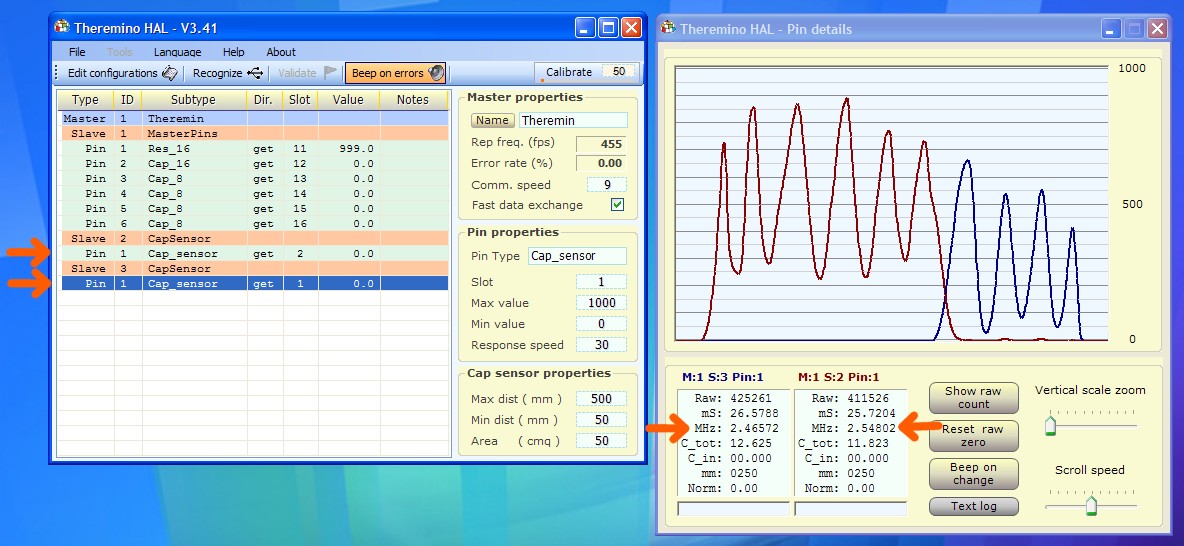
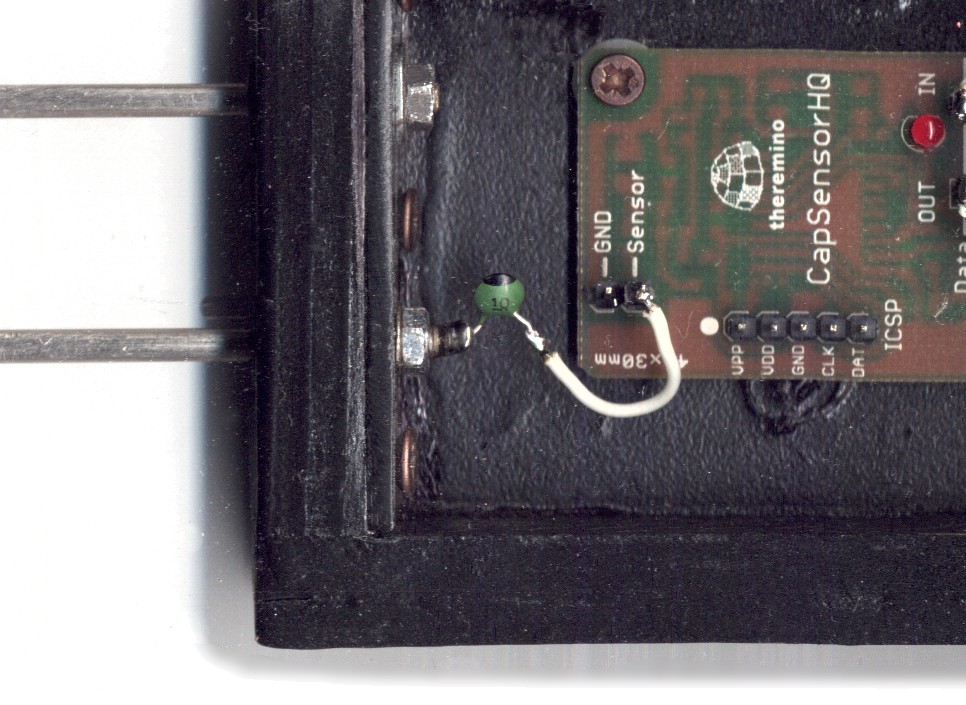
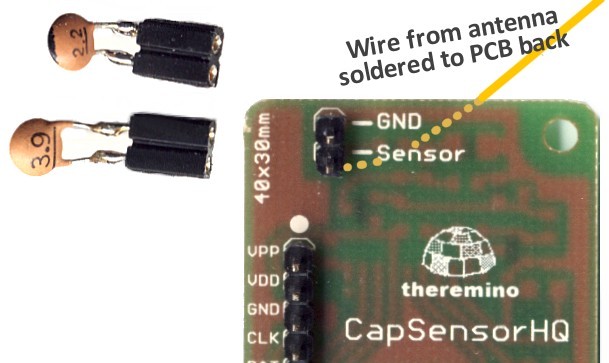
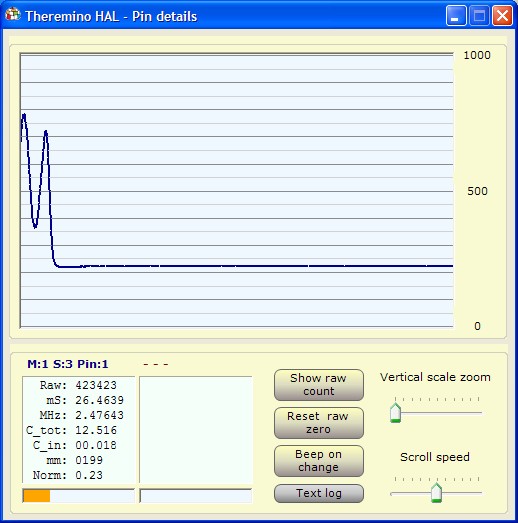

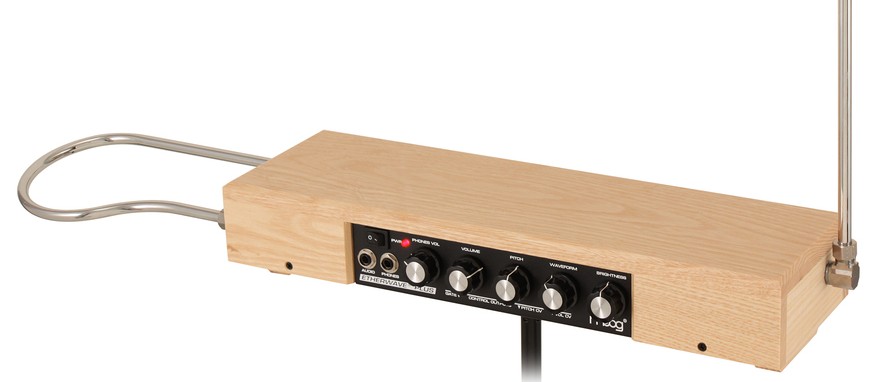
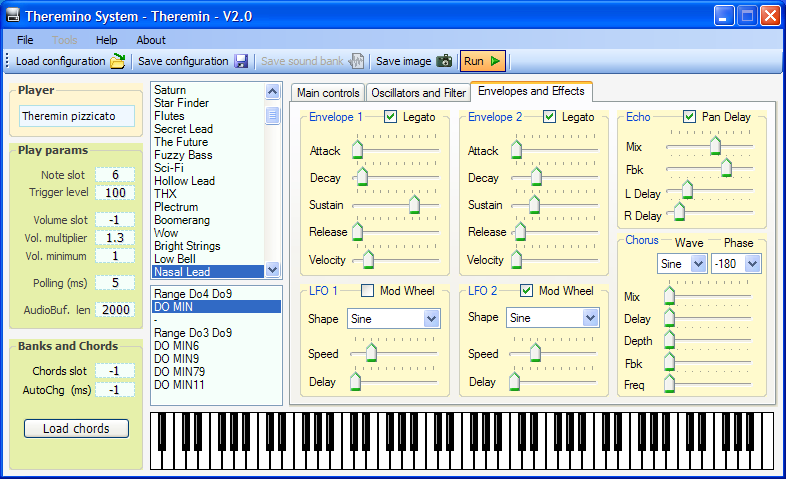

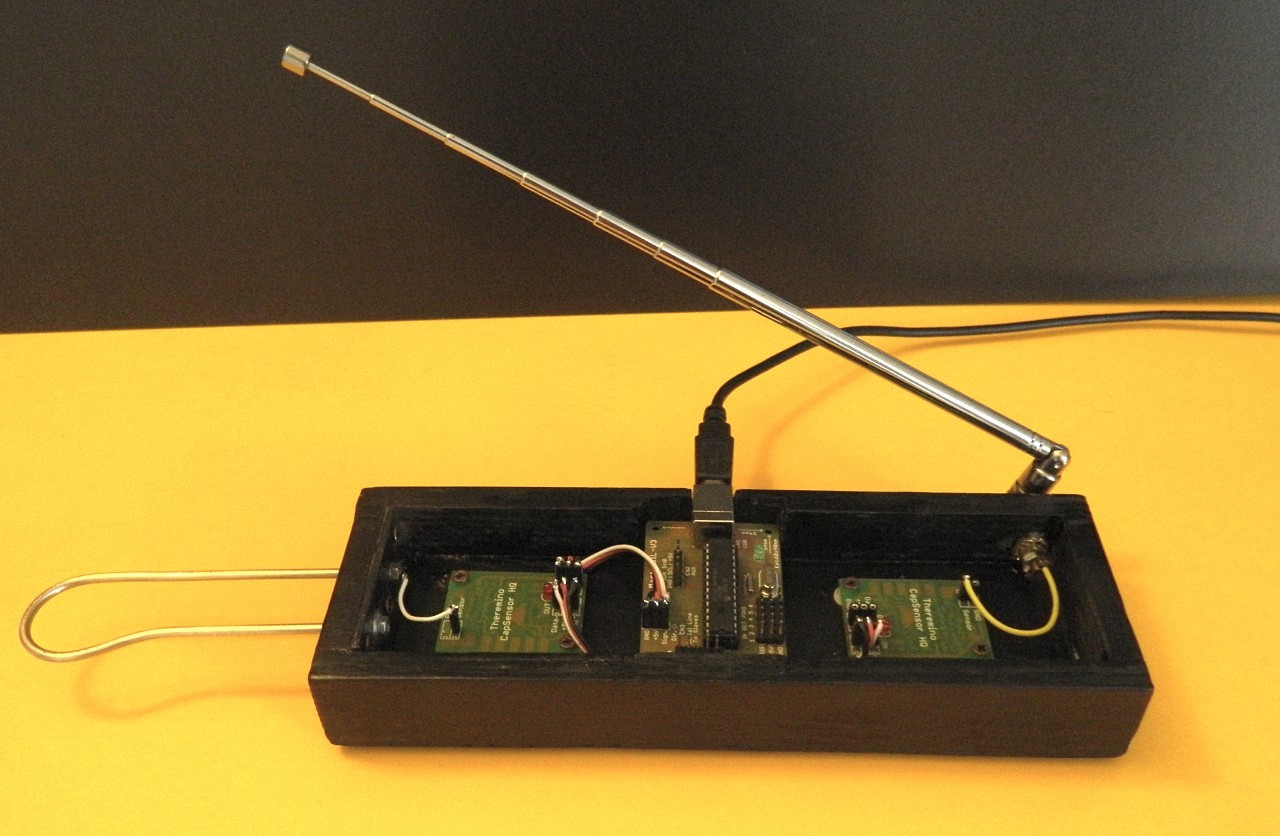
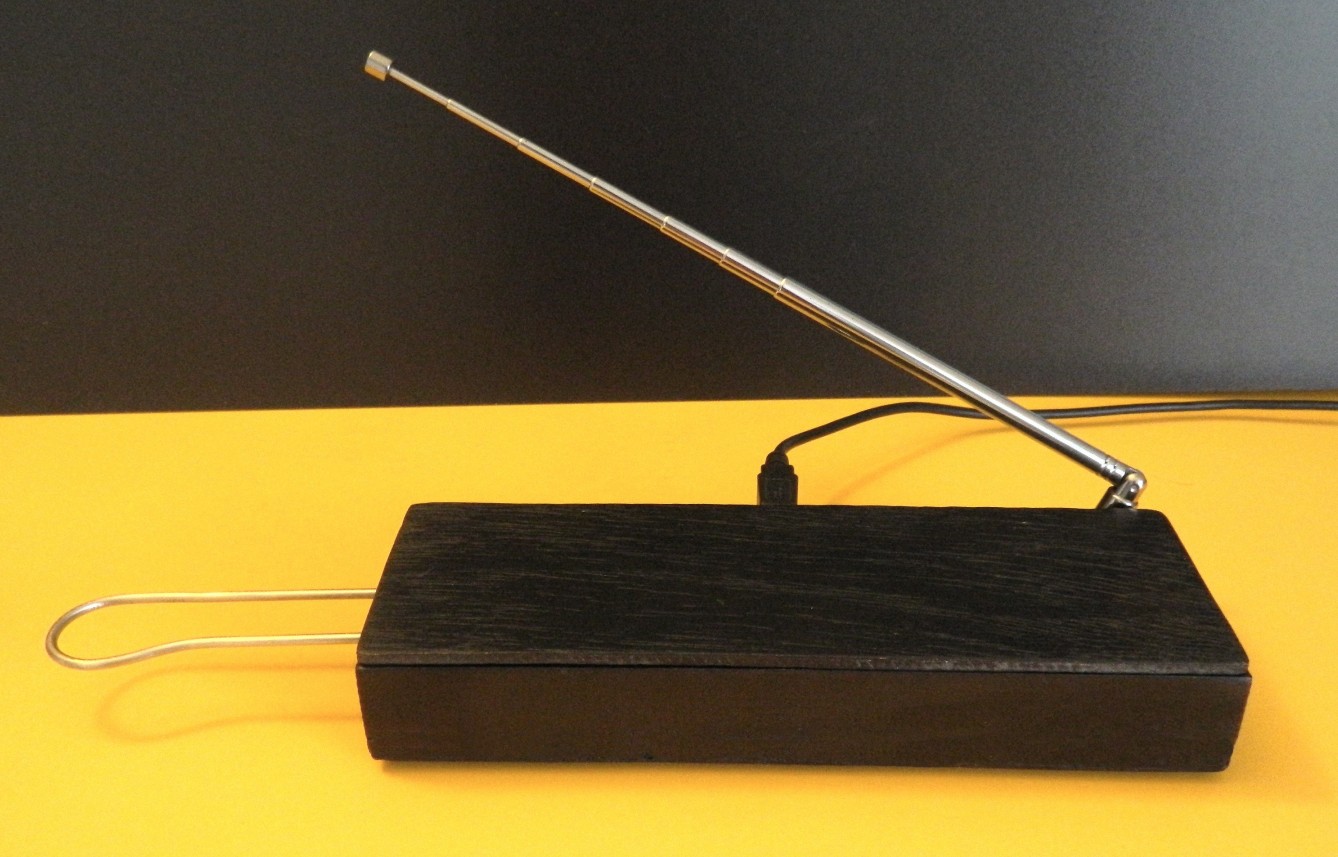

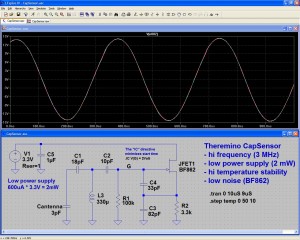

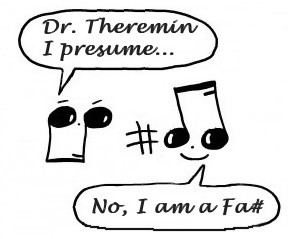
Sorry for the newbie question, I'm now getting close to the project.
It's possible, using the current forms, obtain an analog-to-midi converter?
Eventually combining such modules?
Thank you
The application can do SlotsToMidi, But it converts the value of the slot in the Notes and Volume. Each Slot is a note and the numerical value of the Slot represents the volume of the note.
Instead the application Theremin, It can transform the value of a slot in NoteBend and the value of another slot in volume.
To send physical values in values in slots you can use the ADC of the Master Module. Or you can link to the Master CapSensor who feel the distance of a hand.
Convert Midi is quite complex (you get lost easily with the values of the notes). Furthermore, the results may not be those images because they depend on “tool” midi sounding, which may not be suitable to the type of driving that by and could play bad or not sound at all. If you can ask us for further details.
I tried to:
– AudioInput used to read the PC microphone and separate it into two slots:
– on a frequency slot
– one slot on the volume
– SlotsToMidi use to read those two slots and play them
But the note was always the same, better rereading your post I understand that I should use instead of SlotsToMidi Theremin.
A question about AudioInput, I'm not sure I understand what they represent 3 slot:
– counter slot is the signal frequency?
– Meter slot is the volume of the signal?
– Spec. First slot cos’è?
– What do the parameters of section FHT spectrum bands? (min/max dB, min/max freq, log X, log Y, speed, AGC)
I searched the documentation, which it is usually in the application zip, but I have not found so I tried to squeeze meaning from web page of the application.
I'll tell you what I think I know, then tell me if I'm right:
– in section FHT spectrum bands are defined:
– the number of spectrum bands that you want to detect (ES. 3)
– the minimum and maximum frequency of the spectrum to be analyzed
– the contribution of each of the signal spectrum bandwidth is sent into an array of slot that departs from Spec. First slot (ES. 201) and ends after the chosen number of bands (ES. 203)
– Trigger level should serve to cut the background noise, considering the null signal if below a certain threshold?
– Dead time is used to separate a trigger other? I.e., If I'm picking up shots of a piezo electronic drums and I note a signal above the trigger level, I have to wait at least one dead time of silence (signal below the trigger) to consider it as a second pulse? If it was that I should set it to 0 for my purposes?
Thank you
You got everything right, except trigger level and dead time, which serve only for the counter.
And’ explained here (in the part that explains how to operate the counter for the Geiger):
https://www.theremino.com/downloads/multimedia#audioinput
Pedro asked us
I read that the Master Dil-V5 and the Cap Sensor HQ – V4, I can build my cello Theremin. I have a tape potentiometric (resistive strip) and I want to build a theremin cello. You can support me with this project?
REPLY
– Do not use the CapSensor (It serves only for Theremin with antennas)
– Use only Master and your tape potentiometer (It must be a true potentiometer not a variable resistor, true the potentiometers are from SparkFun)
– Connect the extremes of the potentiometer to GND and 3,3 volts on Pin Master Module
– Connect the center of the potentiometer to SIGNAL Pin 1 of the Master
(ATTENTION: if you connect the center of the potentiometer 3,3 volts, at 5 It was the GND o, You may damage the potentiometer)
– Open the application and set the Theremino HAL Pin 1 come Adc16
– Sets the Pin Slot 1 with the same slot that uses as notes in the app-Slot Theremin (normally 111)
– Apri l’app Theremin
– Upload a configuration, for example, “Theremin Classic – String”
– Make sure the volume of the app Theremin both manual (Volume Slot = -1)
– Raise the orange volume slider with the mouse
– It sounds
– If the note increases in the wrong direction, exchanges the two extremes of the potentiometer.
So you have to appropriately set a million other things, learn how to use the app Theremin … etc … etc …
———–
In the future you may also use other VST plug-in instead of the app Theremin. In this regard, read the multimedia page:
https://www.theremino.com/downloads/multimedia
Salve, where can I find a step by step guide to build a theremin with Theremino?
Towards the end of the Theremin section you can find the documentation, the same one that is located in the application when the discharges Theremin:
https://www.theremino.com/downloads/multimedia#synth
Here's the direct link to the PDF file in Italian:
https://www.theremino.com/wp-content/uploads/2012/03/ThereminHelp_ITA.pdf
In ThereminHelp_ITA.pdf files you will find pictures and tips.
When it's time to make it work, If you can not do something, write here again.
I can’t get the Theremino Hardware signal to play notes.
I have built the unit using the Master board and one Capacitive Sensor.
In Theremino HAL the Cap_Sensor appears in slot 111.
In Pin details I can see the effect of my hand getting closer or further from the antenna.
But I can’t get this signal to drive the playing of notes in the Theremino System window.
The notes play when I click the mouse on the keyboard.
Anyone know what I am missing?
1) Remember to “Calibrate” in the HAL (as explained in the instructions)
2) The value in the Slot 111 must change from 0 to 1000
3) Go in the Theremin app and open the menu “Load config”
2) Select “Classic theremin” (or Theremin Pizzicato)
4) Move the hand near to the antenna.
If not working write another time here.
I started the program again today and it is working.
Maybe it needed to be re-initialized.
Thanks for the fast reply.
Good morning,
I bought a master module and 2 cap to make a Theremin to give to a musician friend.
Unfortunately, I can't load the Thereminsynt application, I can't get it started, clicking on it opens only the image, I searched the whole site but nothing to do.
Forgive me but I feel very incapable and cannot understand, it should all be very simple, you can see that I am old..
A little help, Thank you,
Cesare
What does it mean that only the image opens ?
However, if it doesn't work out, you may have got these things wrong:
– Not having unzipped the ZIP file to a folder
– Having launched something else instead of the file: “Theremino_Theremin.exe”
– Having a weird Windows that doesn't have DotNet installed 3.5 (all recent windows should have it but you never know)
If the problem is DotNet missing download it from here and install it:
https://www.theremino.com/downloads/notes-on-software
I also remind you that using the theremin is not easy read its manual well and learn that it must communicate with the HAL application by means of the right SLOTs.
At first, always use the menu “Load config” and loads ready-made and complete configurations because changing configurations is not easy.
So if you get lost, open the menu “Load configuration” and loads “Theremin Pizzicato” or “Theremin Classic”
—-
If you can't write again or look for me on Skype as livio_enrico
Dear!
Thank you for all the useful information that I can always find on the portal.
I'm a relative newbie and I use the theremin mainly for effects on reggae/dub/digital reggae/reggaetek tracks.
I tried all the sounds in the library and selected my favorites (about six) that I'm applying with some success. It seems absurd to me, but you can't expand to the library and/or you can't find other files “.Voice” online, So far I've tried but without success. For example,, I would need banal sirens.
Can you give me a hand?
Thank you!!!
Voice files ?
Use our Theremin app? In this case, the entries are composed within the application with its controls and you can edit them and create others as you like.
Unfortunately, I believe that there are no more than a few thousand who use our app and therefore the chances that someone will take the trouble to publish are quite small.
If I have misunderstood the question, write again, explaining better. Hello.
Yes, Use Your Application. When I export/import possible sounds, I notice an archive of files that are indicated to me with the extension “.Voice”. I was simply wondering if there wasn't a space where any experimentation on new sounds is shared.
I'm sorry, No one here has published files with the *.voice extension, maybe you could find them on other sites but I don't know…
Did you know that our app can also send signals to a midi channel?
And in that case you could find midi sounds of all kinds and have them play from the system midi. If you do this, however, you have to turn off the sounds of the application by choosing a mute voice.
You should succeed, If you can't write me again.